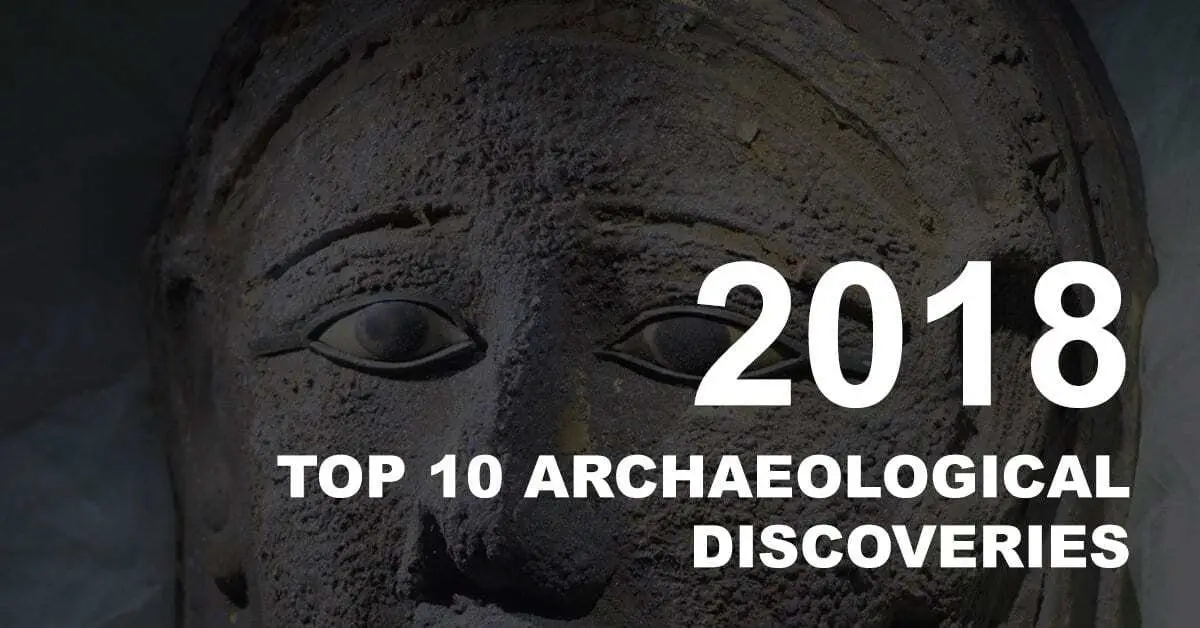1 – The world’s oldest known drawing
The earliest evidence of a drawing made by humans has been found in Blombos Cave in the southern Cape in South Africa. The drawing, which consists of three red lines cross-hatched with six separate lines, was intentionally drawn on a smooth silcrete flake about 73 000 years ago. This predates previous drawing from Africa, Europe and Southeast Asia by at least 30 000 years. Find out more

2 – World’s ‘Oldest Intact Shipwreck’ found in Black Sea
A Greek merchant ship dating back more than 2,400 years has been found off the Bulgarian coast in the Black Sea. Find out more
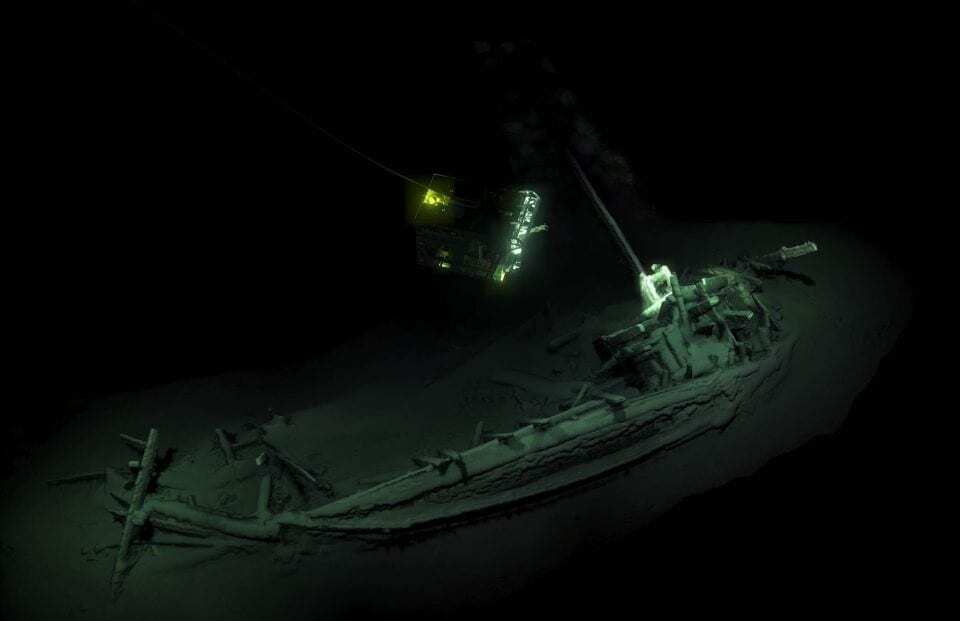
3 – New Nasca lines found in Peru
Thanks to the latest advances in space archaeology and aerial drone surveys, archaeologists have discovered 50 new examples of Nasca and Paracas lines in Peru. Some of the discovered lines date from the Nasca culture, however, many ancient lines and geoglyphs are believed to date from between 500 BCE to 200 CE and provide crucial insight into the Paracas and Topara culture. Find out more
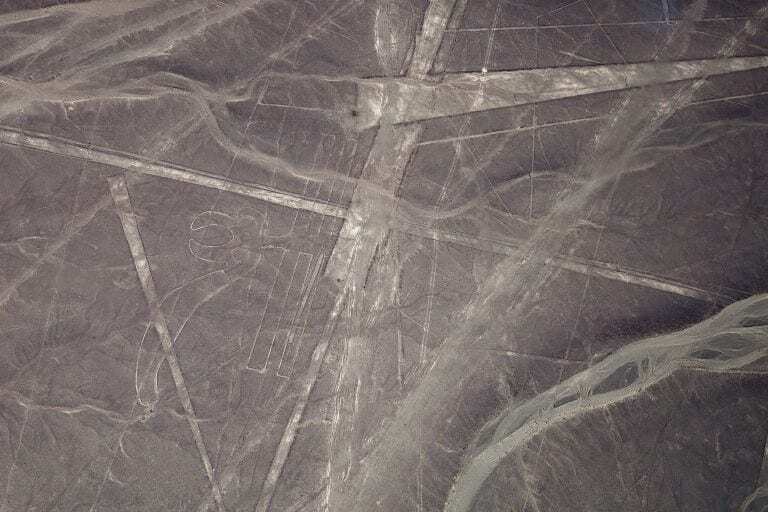
4 – Researchers discover gilded mummy mask
Researchers at the University of Tübingen have discovered a gilded mask on the mummy of a priest in Saqqara, Egypt. It is from the Saite-Persian period (664-404 BCE). The tomb complex where the Tübingen researchers have been working is made up of several shaft tombs, some of them more than thirty meters deep. Over the top of one of the main shafts, the archaeologists found the remains of a rectangular building made of mud brick and irregular limestone blocks; it appears to have been a mummification workshop. Find out more

5 – Painted tomb discovered in Cumae (Italy): A banquet frozen in time
Archaeologists have discovered a series of vaulted burial chambers made of tuff, a volcanic stone in the ancient city of Cumae, located 25 km west of Naples on the Tyrrhenian Sea. Find out more
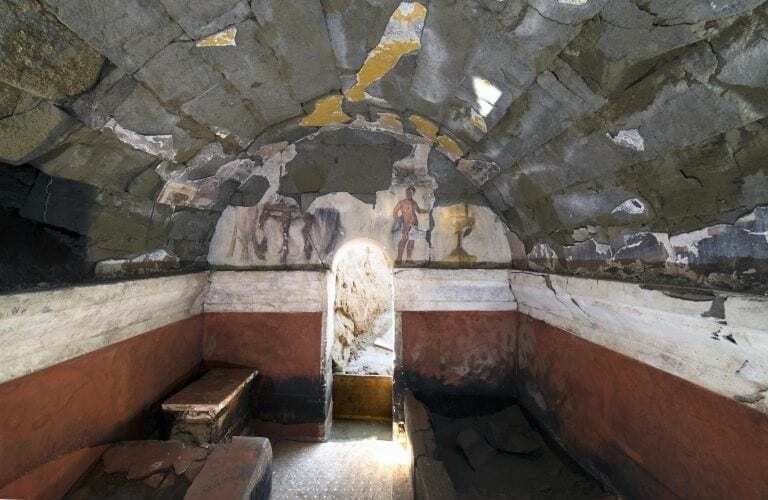
6 – Archaeologists discover bread that predates agriculture by 4,000 years
At an archaeological site in northeastern Jordan, researchers have discovered the charred remains of a flatbread baked by hunter-gatherers 14,400 years ago. Find out more

7 – Earthquake reveals remains of temple inside Aztec Pyramid
A 7.1 magnitude earthquake has led to the discovery of an ancient shrine dedicated to the rain god Tláloc beneath the pyramid of Teopanzolco in Cuernavac, Mexico.
The discovery was made when researchers of the Institute of Anthropology and History (INAH) carried out radar surveys to asses the pyramid’s damage and found a 6 by 4-metre temple within the pyramid. Find out more
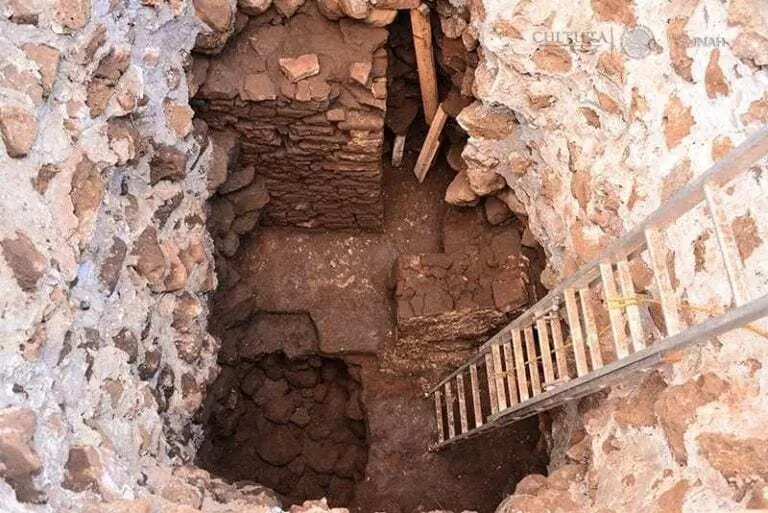
8 – Roman decapitated and crushed by block of stone while fleeing eruption of Mount Vesuvius in Pompeii
Archaeologists made the discovery at the Pompeii archaeological park at the crossroads of Vicolo delle Nozze d’Argento and the recently unearthed Vicolo dei Balconi, which extends towards Via di Nola. Initial studies suggest that the individual survived the first eruptive phase of the volcano, and subsequently sought salvation along the alley now covered in a thick layer of lapilli. In the ensuing pyroclastic eruptions, the victim’s thorax was crushed by a large block of stone that was violently thrown by the volcanic cloud. Find out more
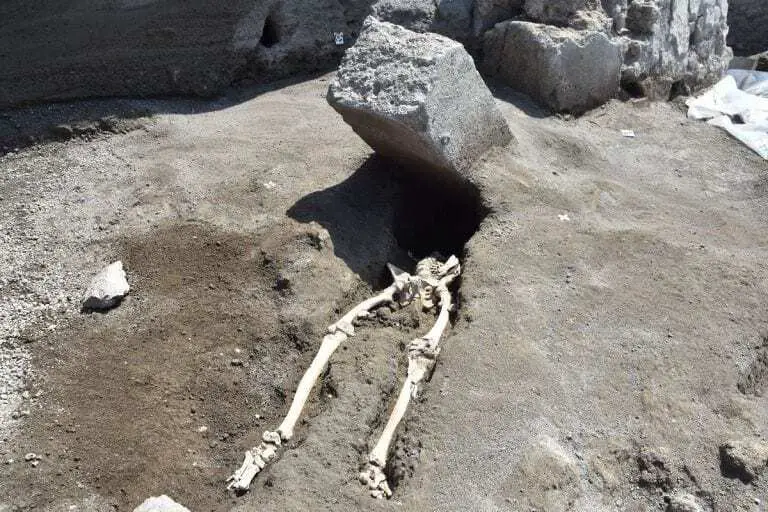
9 – Rare German U-boat found in Skagerrak
The Sea War Museum Jutland in Thyborøn, Denmark announced the discovery of the German U-boat U-3523, which was sunk by depth bombs in Skagerrak by a British B24 Liberator aircraft on 6 May, 1945. Find out more

10 – Cuneiform tablets from Bassetki reveal location of ancient royal city of Mardaman
Translations of Assyrian writings found by archaeologists from the University of Tübingen have yielded a secret lost to history: The place where the clay tablets were found – Bassetki, in Autonomous Region of Kurdistan in Iraq – appears to be the ancient royal city of Mardaman. Find out more


